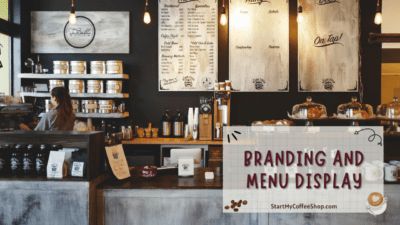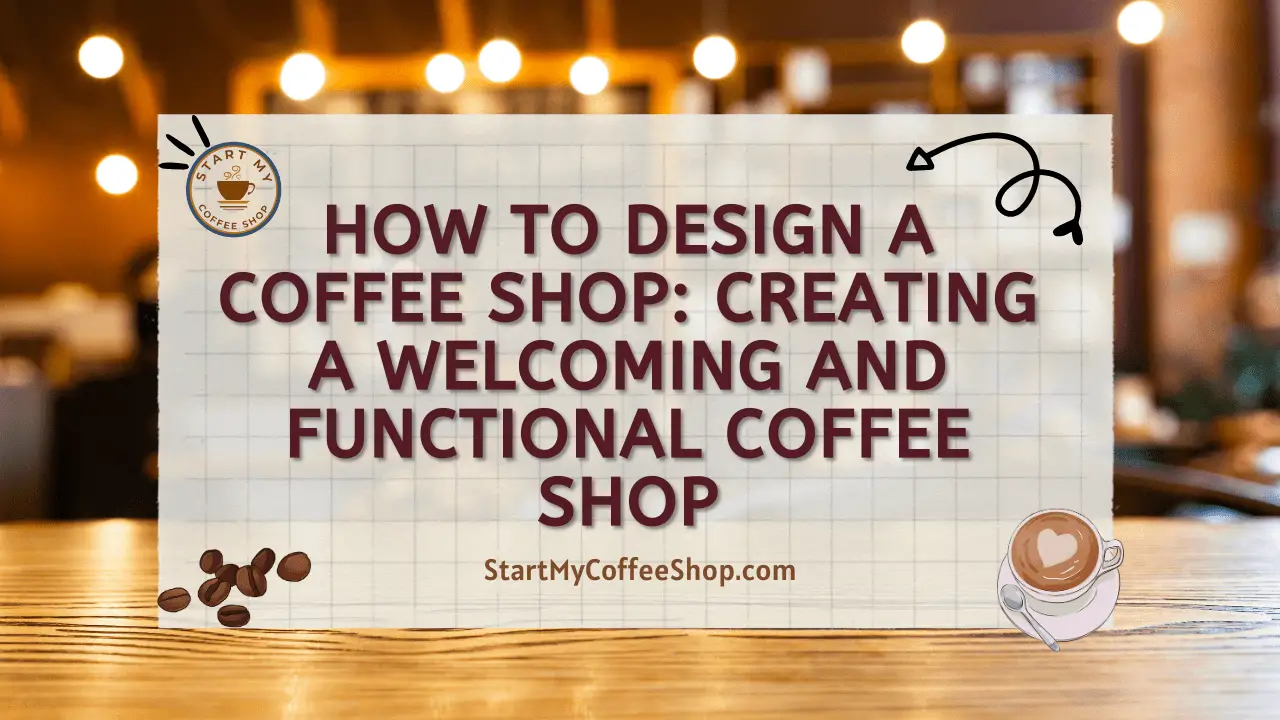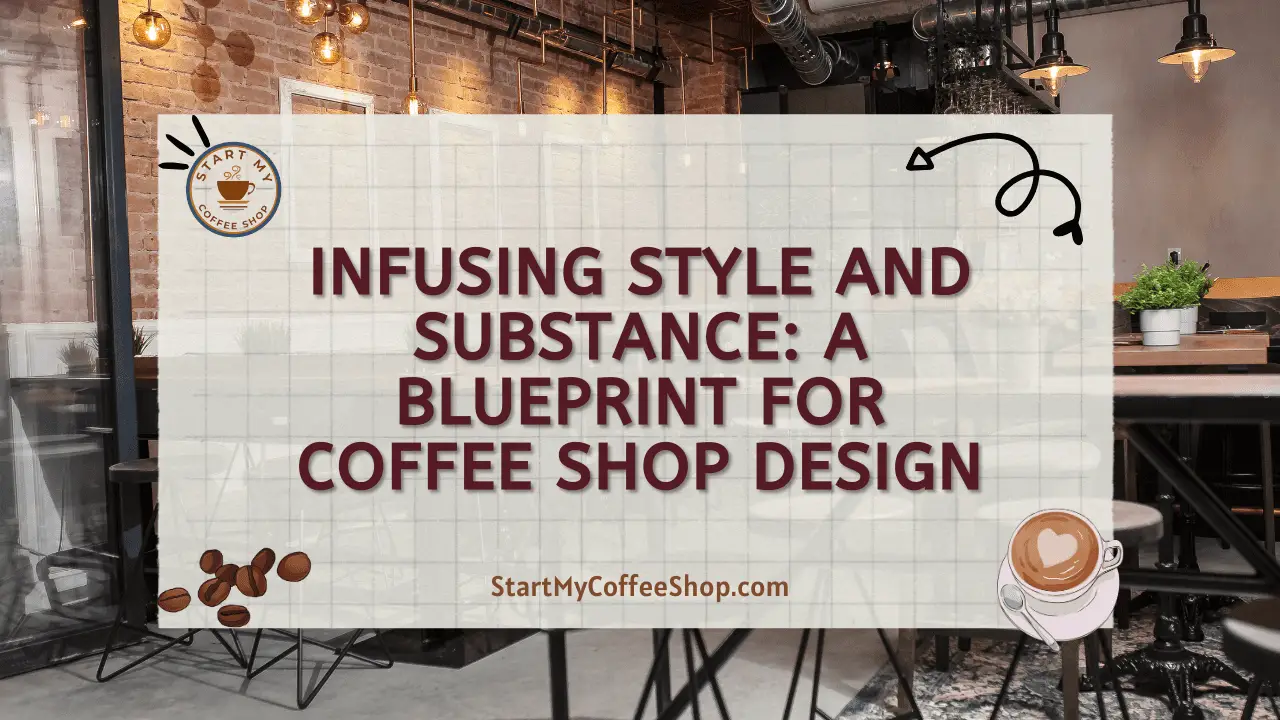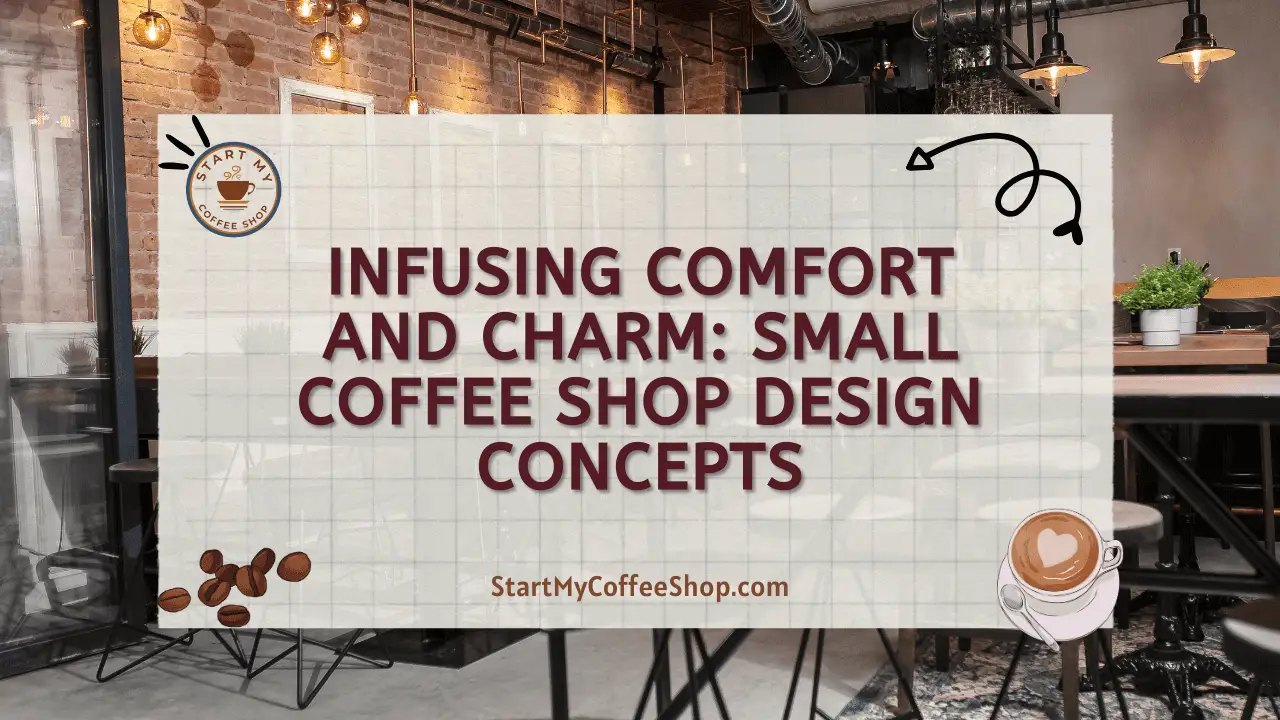Designing a coffee shop is a delicate art that involves crafting a space that is both inviting and efficient for customers. The progress of a coffee shop is not solely based on the quality of its coffee but also on the atmosphere it provides.
Some considerations for designing a coffee shop that you need to think about are layout planning, interior design, furniture selection, lighting, color schemes, branding, menu display, efficient workflow, customer seating, and ambiance creation.
In this article, I will explore key considerations and steps involved in designing a coffee shop to ensure it becomes a welcoming and functional space for customers.
1. Layout Planning
When it comes to designing a coffee shop, the layout is of utmost importance. Careful planning of the space is crucial to create an environment that maximizes efficiency and enhances customer flow. The first step is to analyze the available space and identify specific areas for various functions within the coffee shop, such as the service counter, brewing area, seating arrangement, and restrooms.
It is essential to ensure that there is ample space for customers to move around comfortably and for employees to work efficiently. By providing sufficient room, you can avoid congestion and bottlenecks that can negatively impact both customers and employees. A cramped and disorganized layout can lead to frustration and hinder the overall experience.
Consider incorporating an open floor plan in your coffee shop design. This approach promotes easy navigation for customers, allowing them to move freely and explore different areas of the shop. An open layout creates a sense of spaciousness and accessibility, making the space feel welcoming and inviting.
When planning the layout, it is also important to consider the customer journey. Think about the flow from the moment they enter the shop to ordering, receiving their beverage, and finding a place to sit. Design the layout in a way that naturally guides customers through these steps, ensuring a smooth and intuitive process. Place the service counter in a central and easily visible location, making it convenient for customers to place their orders.
Another consideration is the placement of the brewing area. It should be strategically positioned to minimize distractions and interference with customer flow. This area should be easily accessible for staff members to prepare beverages efficiently while maintaining a clean and organized workspace.
In addition to optimizing customer flow, the layout should also provide ample seating options. Consider the different needs and preferences of your customers, and design a seating arrangement that accommodates a variety of group sizes and seating styles. Incorporate a mix of comfortable chairs, cozy sofas, communal tables, and smaller tables for individuals or pairs. Ensure that there is enough space between tables to allow for privacy and easy movement.
2. Interior Design and Atmosphere
The interior design of a coffee shop is a crucial aspect that sets the tone for its atmosphere and overall ambiance. To create a captivating and inviting space, it is important to start by defining a theme or style that aligns with your brand identity and resonates with your target customers.
Whether you choose a rustic, contemporary, or minimalist aesthetic, maintaining consistency in design elements such as colors, materials, and furniture will contribute to a cohesive and visually pleasing environment.
When designing the interior, pay careful attention to lighting as it has a significant impact on the mood and ambiance of the space. Utilize natural light whenever possible, as it creates a warm and inviting atmosphere.
Large windows or skylights can help bring in ample natural light during the day. In the evenings, supplement natural light with warm, soft lighting fixtures such as pendant lights, wall sconces, or table lamps. Lighting should be thoughtfully placed to create a comfortable and cozy atmosphere, allowing customers to relax and enjoy their coffee.
Selecting furniture that is both comfortable and aesthetically pleasing is essential. Consider the overall design theme when choosing furniture pieces, ensuring they harmonize with the style you have established.
The furniture should not only contribute to the visual appeal but also be practical and durable for everyday use in a bustling coffee shop. Strike a balance between aesthetics and functionality, selecting materials and finishes that are easy to clean and maintain.
Incorporate thoughtful details throughout the space that align with the overall design theme. This could include artwork, wall decor, or unique elements that reflect the coffee shop’s personality and add a touch of charm. Plants and greenery can also enhance the ambiance, bringing life and freshness to the interior.
By giving careful attention to the interior design, you can create a coffee shop that captivates customers and provides them with a memorable experience. A cohesive design theme, thoughtful lighting choices, comfortable furniture, and attention to detail will contribute to a welcoming and visually appealing space that keeps customers coming back for more.
3. Branding and Menu Display

Branding and menu display are integral components in creating a welcoming environment for a coffee shop. Developing a strong brand identity that accurately reflects the values and character of your establishment is crucial. Start by creating a captivating logo that embodies the essence of your coffee shop. Consider the use of distinctive colors, typography, and imagery that align with your brand’s personality. A well-designed logo can leave a lasting impression on customers and contribute to the overall ambiance.
Choose a distinctive color palette that resonates with your brand. Colors evoke emotions and set the mood of a space. Whether you opt for warm, earthy tones for a cozy atmosphere or vibrant hues for a lively ambiance, consistency in color choices throughout the coffee shop will create a cohesive and visually pleasing experience for customers. Incorporate these colors into various elements such as signage, wall paint, furniture upholstery, and decor to reinforce your brand identity.
Craft a unique brand story that connects with your target customers. Share the story of your coffee shop’s origins, inspiration, and commitment to quality. Communicate your values and the unique selling points that set your establishment apart from others. Use this narrative to create an emotional connection with customers and foster a sense of loyalty and trust.
Incorporate your branding elements into the physical space. Display your logo prominently on signage, entrance doors, and windows to attract attention and establish brand recognition. Utilize menu boards that are visually appealing and easy to read. Prioritize clarity in font choice and use visually engaging graphics to showcase your menu items. Categorize the menu items in a logical and intuitive manner, such as grouping drinks by type or offering sections for different meal options. This helps customers navigate the menu effortlessly and make informed choices.
Consider additional ways to incorporate branding into the coffee shop’s physical space. Use wall decor, artwork, and murals that align with your brand aesthetic to create a visually captivating and immersive experience for customers. This not only enhances the ambiance but also reinforces your brand identity throughout the space.
Read more about Cost to Open Scooter’s Coffee Shop: Mapping Out the Financial Landscape
4. Efficient Workflow and Customer Seating
Efficiency is a crucial factor in the growth of a coffee shop. When designing the space, it is important to focus on facilitating a streamlined workflow for employees. From the moment orders are received to the preparation of beverages and serving customers, every step should be optimized for efficiency.
Consider the placement of equipment in the coffee shop to ensure easy accessibility and a logical arrangement. The espresso machine, coffee grinder, and other essential tools should be positioned strategically, allowing baristas to work efficiently without unnecessary movement or obstacles. By creating a well-organized workspace, you can minimize the time and effort required for each task.
To maintain cleanliness and organization, it is beneficial to create designated areas for storage and waste management. Establish clear spaces for storing coffee beans, supplies, and equipment, ensuring everything has a designated place.
Similarly, incorporate proper waste disposal stations to keep the workspace clean and tidy. This helps maintain a hygienic environment and ensures that employees can quickly locate what they need, improving overall efficiency.
When it comes to customer seating, finding the right balance between comfort and maximizing the number of available seats is essential. Offer a variety of seating options to cater to different preferences and needs. Consider incorporating cozy armchairs, communal tables for larger groups, and individual workstations for customers who may want to work or study.
Pay attention to spacing between tables to allow for privacy and comfortable movement. Providing adequate space between seating areas not only ensures customer comfort but also facilitates ease of movement for both customers and staff.
5. Ambiance Creation
The ambiance of a coffee shop plays a significant role in shaping customers’ experiences and their inclination to return. While aesthetics are important, other factors such as background music, temperature control, and scent also contribute to creating a memorable atmosphere.
Selecting the right playlist is crucial in setting the desired vibe for your coffee shop. Choose music that aligns with the overall ambiance you want to create. Whether it’s soothing jazz, indie folk, or upbeat tunes, the playlist should enhance the relaxed and pleasant atmosphere. The right music can create an inviting and enjoyable environment for customers to savor their coffee.
Maintaining a comfortable temperature throughout the day is essential. Consider the weather and adjust the temperature accordingly. During colder months, ensure the space is warm and cozy, while in warmer months, maintain a cool and refreshing environment. This attention to temperature control ensures customers can fully relax and enjoy their coffee without feeling uncomfortable.
Introducing subtle scents can further enhance the sensory experience. Consider infusing the air with the aroma of freshly brewed coffee or the tantalizing scent of baked goods. These fragrances can create an enticing atmosphere that adds to the overall coffee shop experience.
Providing a mix of quiet and lively areas caters to different customer preferences. Some customers may seek a serene and calm environment, while others may prefer a livelier and more vibrant atmosphere. By creating distinct zones within the coffee shop, you can accommodate various customer preferences and provide options for different moods or occasions.
Summary
Designing a coffee shop that is both welcoming and functional requires careful consideration of various aspects. From layout planning and interior design to efficient workflow and ambiance creation, each step plays a vital role in creating an enjoyable space for customers.
By paying attention to these key considerations, coffee shop owners can ensure that their establishment becomes a go-to destination for coffee lovers seeking not only a great brew but also a memorable experience. A well-designed coffee shop is not just a place to get a caffeine fix, but a haven where customers can relax, socialize, and find solace in the comforting ambiance.
So, whether you’re starting a new coffee shop or revamping an existing one, let these considerations and design steps guide you toward creating a coffee shop that leaves a lasting impression on every customer who walks through the door.
Cheers to crafting the perfect coffee shop experience!
Frequently Asked Questions

1. What are the key factors to consider when choosing furniture for a coffee shop?
When selecting furniture for a coffee shop, it’s important to prioritize comfort, durability, and aesthetic appeal.
2. How can I optimize the workflow in my coffee shop design?
Plan a logical layout that minimizes unnecessary movement for employees. Ensure a smooth flow from the order counter to the brewing area and the serving station.
3. What lighting options work best for creating a cozy atmosphere in a coffee shop?
A combination of natural and warm artificial lighting is ideal. Maximize natural light with large windows or skylights during the day, and supplement with soft, warm lighting fixtures such as pendant lights, wall sconces, or table lamps in the evenings.
To learn more on how to start your own coffee shop checkout my startup documents here
Please note: This blog post is for educational purposes only and does not constitute legal advice. Please consult a legal expert to address your specific needs.

Hi! I’m Shawn Chun
My adventure in coffee began when I first launched my first coffee shop back in the early 2000s. I had to figure out so many things on my own and to make it worse within 2 years of opening two large corporate coffee chains moved in just blocks away from me!
As I saw smaller and even some larger coffee shops in the neighborhood slowly lose customers to these giant coffee chains and slowly close up shop, I knew that I had to start getting creative…or go out of business.
I (like you may be) knew the coffee industry well. I could make the best latte art around and the foam on my caps was the fluffiest you have ever seen. I even had the best state-of-the-art 2 group digital Nuova Simonelli machine money could buy. But I knew that these things alone would not be enough to lure customers away from the name brand established coffee shops.
Eventually, through lots of trial and error as well as perseverance and creativity I did find a way to not only survive but also thrive in the coffee/espresso industry even while those corporate coffee chains stayed put. During those years I learned to adapt and always faced new challenges. It was not always easy, however, in the end, I was the sole survivor independent coffee shop within a 10-mile radius of my location. Just two corporate coffee chains and I were left after that year. All told the corporate coffee chains took down over 15 small independent coffee shops and kiosks and I was the last one standing and thriving.
Along the years I meet others with the same passion for coffee and I quickly learned that it is not only “how good a barista is” that makes a coffee shop successful, but the business side of coffee as well.
Hence why I started this website you are on now. To provide the tools and resources for up and coming coffee shop owners to gain that vital insight and knowledge on how to start a coffee shop successfully.
Stick around, browse through my helpful blog and resources and enjoy your stay! With lots of LATTE LOVE!
Shawn







